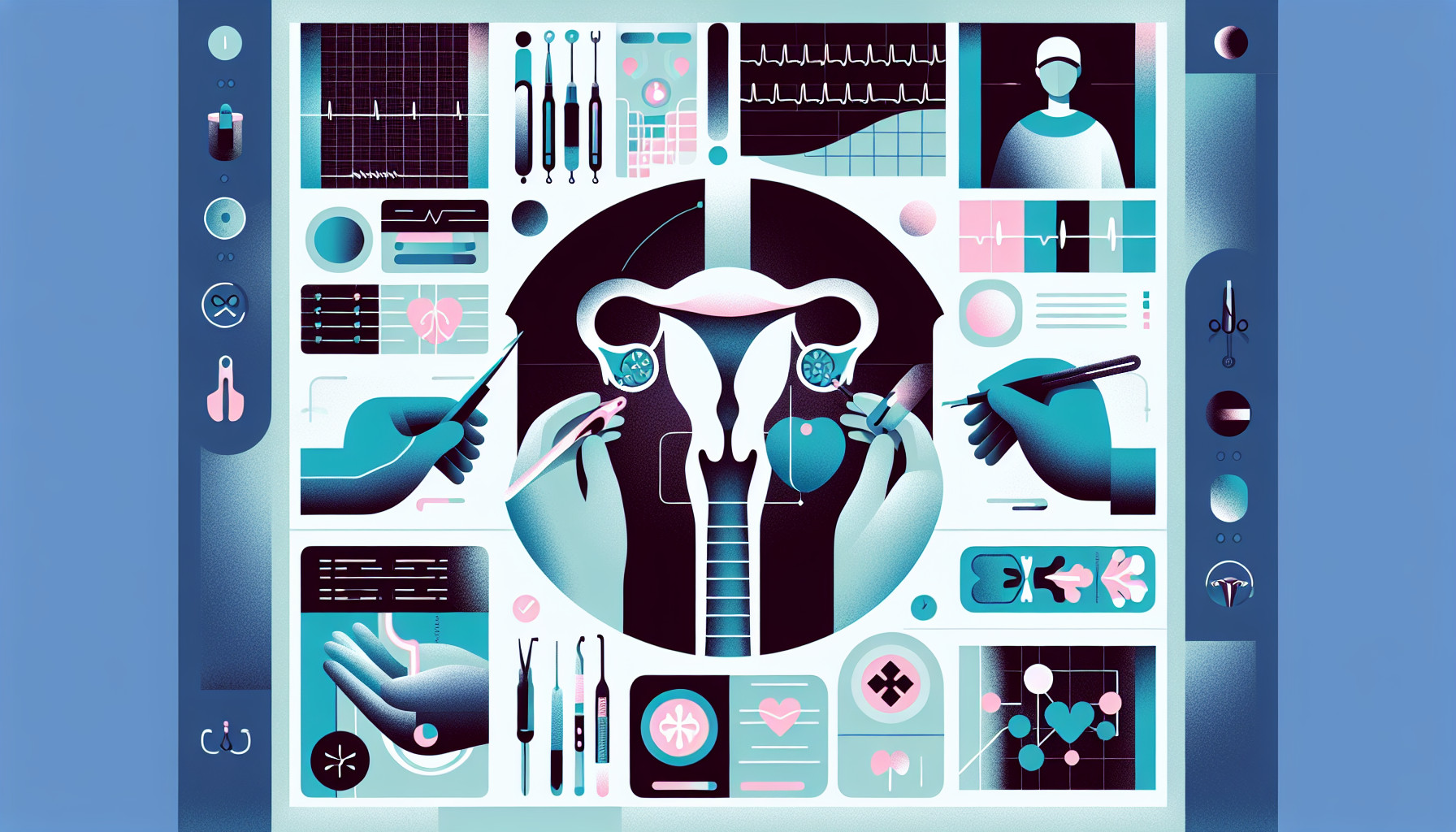Our Summary
This research paper looks at a treatment called endometrial ablation, which is a procedure that destroys the lining of the uterus to reduce heavy menstrual bleeding. Sometimes, this procedure doesn’t work, and women need further treatment, such as another ablation or a hysterectomy (removal of the uterus). The study aimed to find out how often these additional treatments are needed after using newer, second-generation devices for endometrial ablation.
The study looked at nearly 6,000 women who had endometrial ablation treatment at one hospital between 2003 and 2016. They found that about 16% of these women needed further treatment. Of those who did, nearly 14% needed a hysterectomy and about 2% needed another ablation.
The study found that women who were younger, were African-American, or had a specific type of ablation (radiofrequency ablation) were more likely to need further treatment. Women over 45 were less likely to need further treatment. The most common reason for needing further treatment was heavy menstrual bleeding, but other reasons included abnormal bleeding, polyps or fibroids, and pain.
FAQs
- What is endometrial ablation and why is it performed?
- How often do women need further treatment after endometrial ablation, according to the study?
- What factors increase the likelihood of needing further treatment after endometrial ablation?
Doctor’s Tip
One helpful tip a doctor might tell a patient about endometrial ablation is to discuss their individual risk factors and potential need for further treatment with their healthcare provider before undergoing the procedure. It is important to have realistic expectations about the potential outcomes and to understand that additional treatments may be necessary in some cases. Regular follow-up appointments with your healthcare provider are important to monitor your symptoms and determine if further intervention is needed.
Suitable For
Typically, patients who are recommended endometrial ablation are those who experience heavy menstrual bleeding that has not responded to other treatments such as medication or hormonal therapy. Endometrial ablation is often considered for women who have completed childbearing and do not wish to have a hysterectomy. It may also be recommended for women who have benign conditions such as uterine fibroids or polyps that are causing heavy bleeding.
However, it is important to note that not all women are suitable candidates for endometrial ablation. Women with certain medical conditions such as uterine cancer, pelvic inflammatory disease, or an active pelvic infection may not be recommended for this procedure. Additionally, women who have a desire to have children in the future should not undergo endometrial ablation, as it can affect fertility.
Overall, endometrial ablation is a safe and effective option for managing heavy menstrual bleeding in appropriate candidates. However, it is important for patients to discuss their individual medical history and treatment options with their healthcare provider to determine if endometrial ablation is the right choice for them.
Timeline
Before endometrial ablation:
- Patient experiences heavy menstrual bleeding, which may have been ongoing for a long time
- Patient may have tried other treatments such as medication or hormonal therapy with little success
- Patient discusses options with their doctor and decides to undergo endometrial ablation
During endometrial ablation:
- Patient undergoes the procedure, which typically takes less than an hour and is done as an outpatient procedure
- The lining of the uterus is destroyed using heat, freezing, or other methods
- Patient may experience some cramping, discomfort, or spotting after the procedure
After endometrial ablation:
- Patient may experience lighter periods or no periods at all after the procedure
- Some patients may experience complications such as infection or injury to surrounding organs
- If the procedure is not successful, patient may continue to experience heavy menstrual bleeding and need further treatment
- Patient may need to undergo additional ablation procedures or ultimately a hysterectomy if the bleeding persists
Overall, endometrial ablation can be an effective treatment for heavy menstrual bleeding, but it is important for patients to discuss the potential risks and outcomes with their doctor before undergoing the procedure.
What to Ask Your Doctor
Some questions a patient should ask their doctor about endometrial ablation include:
- What are the potential risks and complications of endometrial ablation?
- What is the success rate of endometrial ablation in reducing heavy menstrual bleeding?
- How long does the procedure take, and what is the recovery time?
- Will I still be able to get pregnant after undergoing endometrial ablation?
- What are the chances that I may need further treatment after endometrial ablation?
- What are the different types of endometrial ablation procedures available, and which one would be most suitable for me?
- How will I know if the procedure was successful in reducing my heavy menstrual bleeding?
- What are the alternatives to endometrial ablation if this treatment is not successful for me?
- How often should I follow up with you after the procedure?
- Are there any lifestyle changes or medications that can help improve the success of endometrial ablation?
Reference
Authors: Klebanoff J, Makai GE, Patel NR, Hoffman MK. Journal: Gynecol Surg. 2017;14(1):26. doi: 10.1186/s10397-017-1030-4. Epub 2017 Dec 15. PMID: 29263716
